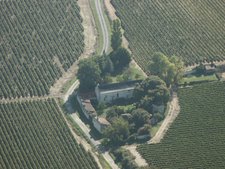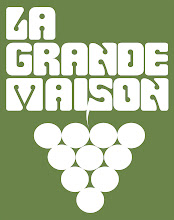We will be "drinking pink" this summer at La Grande Maison in celebration of the Gay Icons Exhibition at the National Portrait Gallery in London, sponsored by Rosé d'Anjou. In honour of the event we have cases of Rosé d'Anjou wine to give away to all our lucky guests. The first guests to arrive at La Grande Maison to produce their ticket stub from the exhibition will win a case of six bottles of this delicious pink packed with summer fruits. Subsequent guests will receive a free bottle of Rosé d'Anjou with every room booked (on production of their ticket stub or proof of visit on arrival).
 Rosé d'Anjou - making a meal of it.
Rosé d'Anjou - making a meal of it.Local Charentais Melon with Bayonne Ham & Rosé Shots
A few facts about Rosé d'Anjou:
Annual production: 155,000 hl Basic yield: 60 hl/haGrape varieties: Grolleau (the most frequently grown variety in this AOC area), Cabernet Franc, Cabernet Sauvignon, Pineau d’Aunis, Gamay and Côt Dominant growing practices: Density of 4,000 to 5,000 plants/ha. Single or double Guyot pruning. Residual sugar content: at least 7g/l (generally less than 20 g/l).
Annual production: 155,000 hl Basic yield: 60 hl/haGrape varieties: Grolleau (the most frequently grown variety in this AOC area), Cabernet Franc, Cabernet Sauvignon, Pineau d’Aunis, Gamay and Côt Dominant growing practices: Density of 4,000 to 5,000 plants/ha. Single or double Guyot pruning. Residual sugar content: at least 7g/l (generally less than 20 g/l).
Tasting - Sensory characteristics: Bright, crystal clear robe of raspberry red or with glints of salmon pink. Notes of small red fruits (strawberry, redcurrant), rose, English candy, with a freshness, finale of mint and white pepper. The perfect wine for gourmands, tender rosés are round and mellow on the palate with a liveliness that compensates for the sweet sensation and refreshes the finish.
Serving temperature: Serve chilled to 6°C
Ageing potential: Should be drunk in its early years, although certain generous vintages can hold surprises in store for several decades.
 A hint of Rosé - La Grande Maison tables decorated with local roses from our garden close to
A hint of Rosé - La Grande Maison tables decorated with local roses from our garden close toDoue La Fontaine, Rose Capital of France.
Olivier Lecomte, President of the Rosé d’Anjou wine-growers syndicate, says: ‘Portraiture is an art which is easy to relate to, cutting across racial, social, sexual, educational and economic barriers whilst enhancing cultural appreciation and awareness. Viticulture shares many of the same values - it blends grape varieties, personalities and culture to create wines which are designed to be enjoyed in a diverse number of ways.’








No comments:
Post a Comment